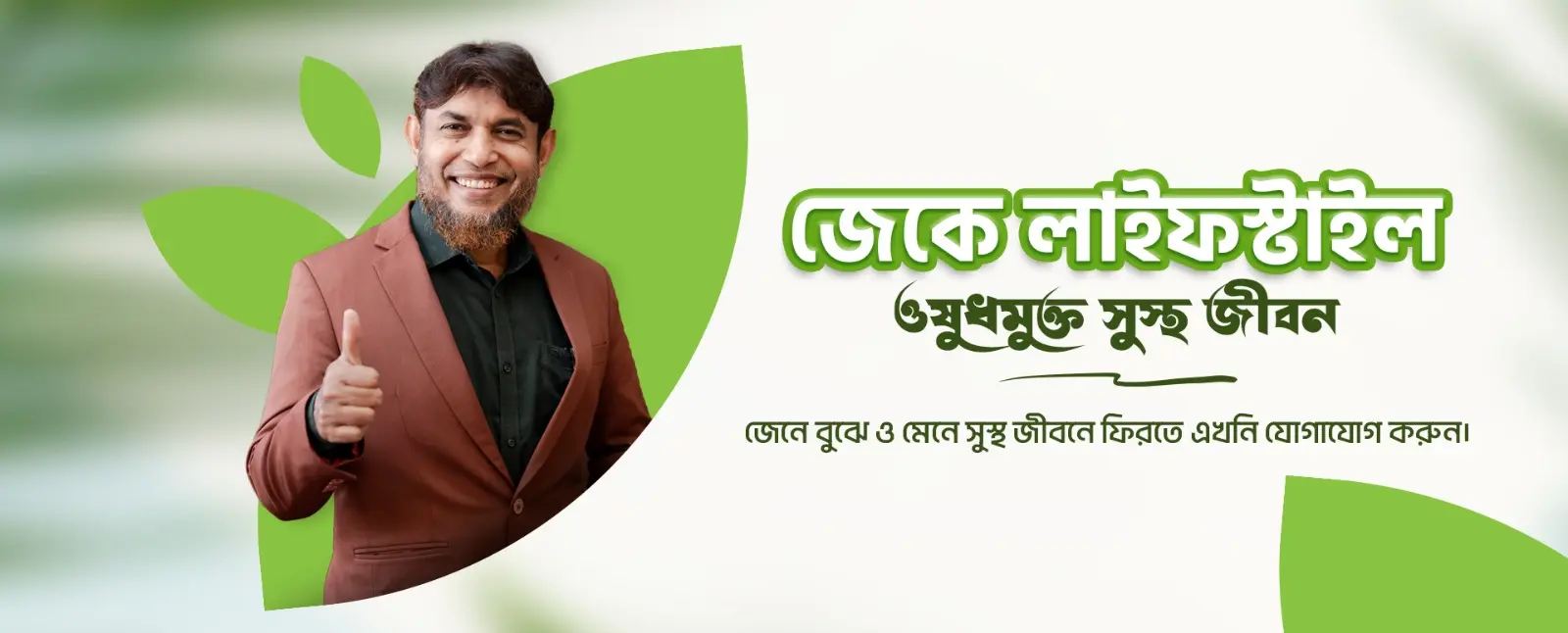Practicing Mental Relaxation: A Key to a Balanced Life
Mental relaxation is not a luxury—it’s a necessity.
In today’s high-stress, fast-paced world, chronic mental stress leads to fatigue, hormonal imbalance, poor sleep, digestive issues, and even lifestyle diseases like diabetes and high blood pressure. At JK Lifestyle, guided by Dr. Jahangir Kabir, we emphasize the vital role of mental relaxation as a pillar of complete wellness.
🌿 Why Mental Relaxation Matters
Mental stress isn’t just “in your head”—it creates a real, measurable impact on your physical health. According to Dr. Jahangir Kabir, without releasing built-up mental tension, no diet, exercise, or supplement can give lasting results.
When your mind is stressed, your body stays in a state of chronic inflammation and hormonal imbalance,
Which can lead to:
✅ High blood pressure
✅ Sleep disorders
✅ Weakened immunity
✅ Emotional instability
Practicing daily mental relaxation helps to:
🔄 Regulate cortisol levels — Prevents stress from becoming chronic
🧠 Sharpen mental clarity — Boosts memory, focus, and emotional control
😴 Improve sleep quality — Allows deeper, more restorative rest
❤️ Protect cardiovascular health — Stabilizes blood pressure naturally
🛡️ Strengthen immunity — Supports the body’s healing and defense systems

🧘 “Calm the mind, and the body will follow.” — Dr. Jahangir Kabir
Natural Relaxation Techniques by Dr. Jahangir Kabir
At JK Lifestyle, we promote simple, natural, and evidence-based relaxation methods that align with Dr. Jahangir Kabir’s philosophy. These techniques don’t require expensive tools—just commitment and consistency.

Deep Breathing & Box Breathing (4-4-4-4 Technique)
A proven way to activate the parasympathetic nervous system and calm stress instantly.
How it works:
Inhale (4 seconds) → Hold (4 seconds) → Exhale (4 seconds) → Hold (4 seconds)
✅ Balances oxygen and carbon dioxide levels
✅ Reduces anxiety and heart rate
✅ Ideal before sleep, during work breaks, or in stressful situations
📅 Practice time: 5–10 minutes, twice daily

Guided or Silent Meditation
Meditation isn’t about stopping your thoughts — it’s about observing them without judgment.
You can meditate using mobile apps, soothing music, or in complete silence. The key is breath awareness and mindful stillness.
✅ Reduces overthinking and emotional reactivity
✅ Strengthens mental clarity and decision-making
✅ Builds patience and self-awareness
📅 Start with: 5 minutes/day, and gradually increase

Nature Therapy & Grounding
Being in nature is one of the most powerful, natural antidepressants.
Spending time in green spaces, under sunlight, or walking barefoot on soil (grounding) can:
✅ Lower blood pressure and reduce inflammation
✅ Improve mood and energy levels
✅ Reset your internal biological clock (circadian rhythm)
📅 Recommended: 10–15 mins/day, morning or evening

Digital Detox Before Bedtime
Your brain needs downtime before sleep. Blue light and screen content delay melatonin release.
What to do:
Turn off phones, laptops, and TV at least 1 hour before sleep
Avoid news, social media, or stressful videos
✅ Improves sleep onset and depth
✅ Supports natural sleep cycles and morning energy
✅ Reduces anxiety caused by screen overload
Build Your Routine: Sample Daily Mental Detox Schedule
| Time | Practice |
|---|---|
| Morning | 10-min box breathing + light stretch |
| Midday | 5-min silent pause after lunch |
| Evening | 10-min gratitude journaling |
| Before Bed | No screen + 5-min meditation |




Visit JK Lifestyle for Personalized Mental Wellness Support
KAt JK Lifestyle, our experienced and certified consultants apply Dr. Jahangir Kabir’s holistic approach to help you achieve lasting mental peace and physical well-being.
Conclusion: Relax the Mind, Heal the Body
Your mind influences everything — from your daily habits to your stress levels and even your metabolism. When you prioritize mental relaxation, you empower your body to heal naturally and restore balance from within.
Take the first step toward lasting inner peace and holistic wellness — the natural way.